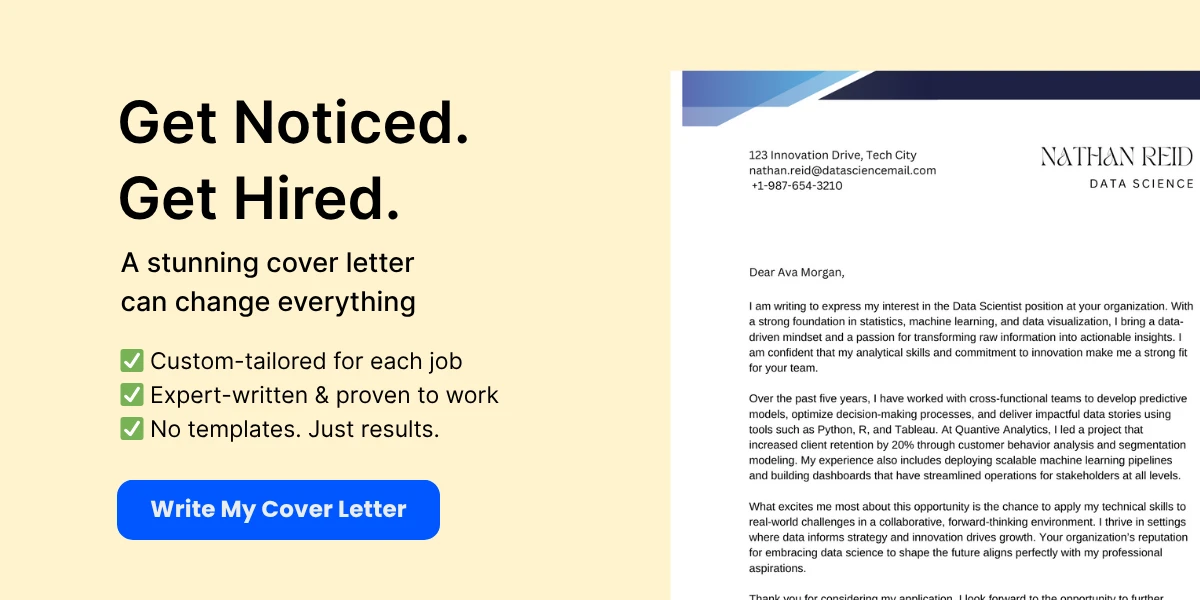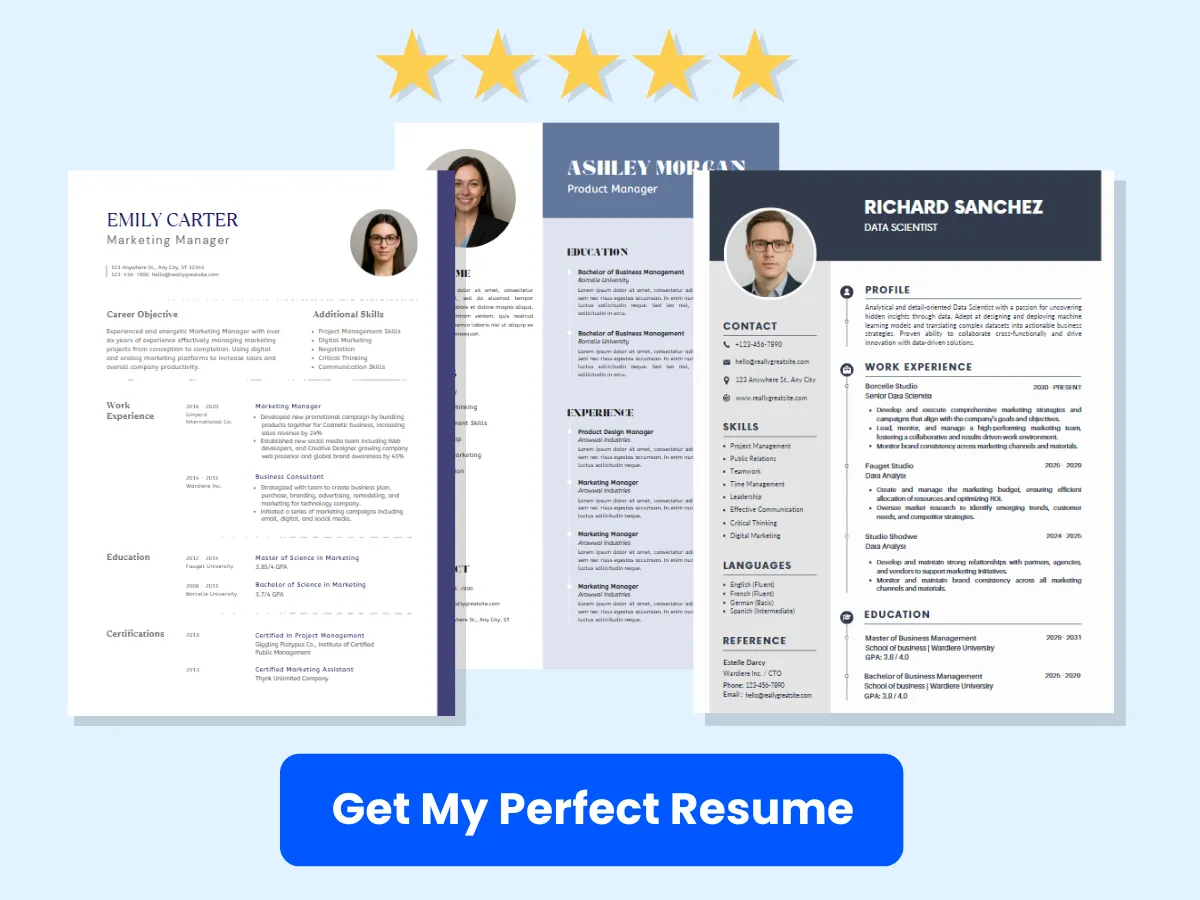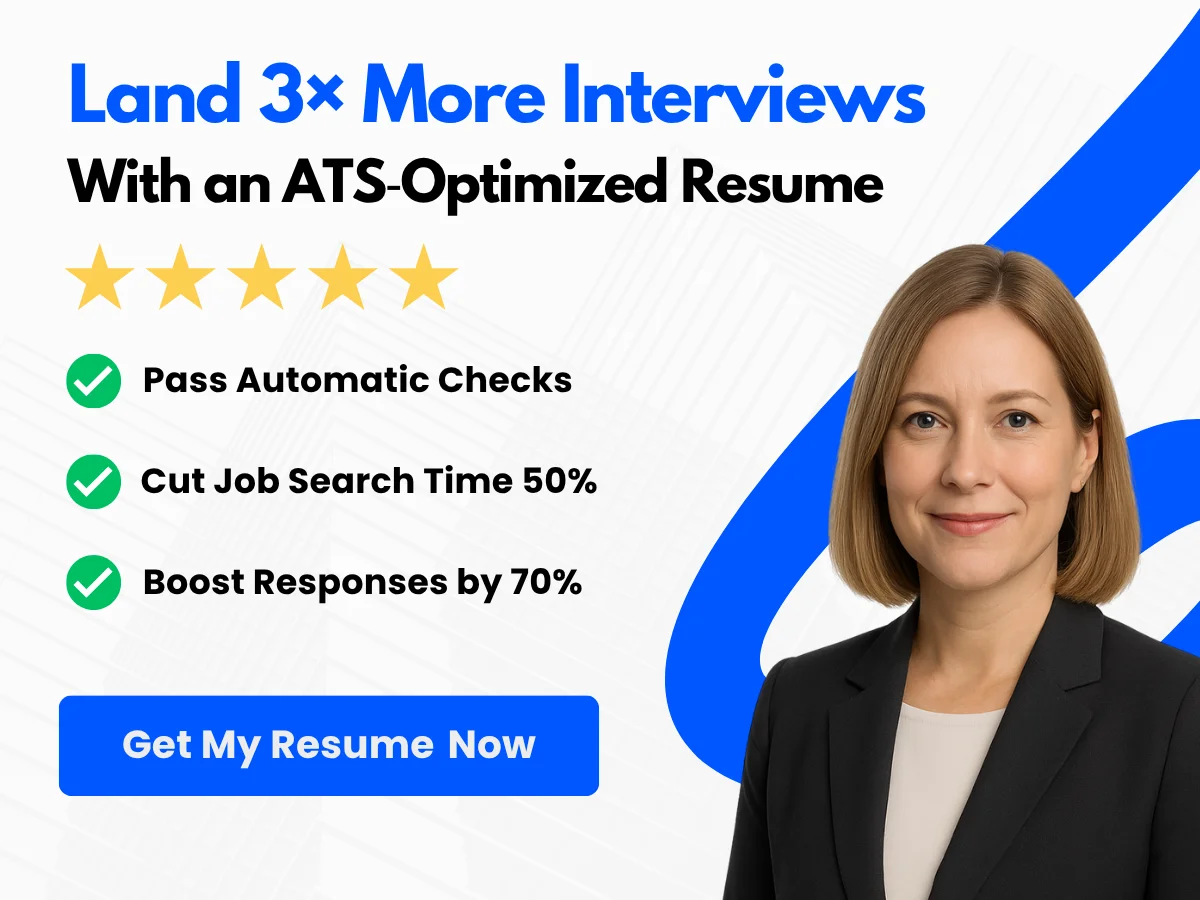In the competitive world of education, a well-crafted resume is your first opportunity to make a lasting impression on potential employers. As a teacher, your resume not only showcases your qualifications and experience but also reflects your passion for education and your commitment to student success. A strong teacher resume can be the key to unlocking doors to interviews and, ultimately, your dream teaching position.
This article serves as a comprehensive guide to creating an impactful teacher resume, featuring 21 expertly designed templates that cater to various teaching styles and career stages. Whether you are a seasoned educator looking to advance your career or a recent graduate eager to land your first teaching job, this resource is tailored to meet your needs.
Throughout this guide, you will discover essential tips for highlighting your skills, crafting compelling summaries, and presenting your experience in a way that resonates with hiring committees. Additionally, we will explore common pitfalls to avoid and best practices to ensure your resume stands out in a crowded field. By the end of this article, you will be equipped with the knowledge and tools necessary to create a resume that not only captures your unique qualifications but also positions you as a top candidate in the education sector.
Exploring the Basics
What is a Teacher Resume?
A teacher resume is a specialized document that outlines a candidate’s qualifications, experience, and skills specifically tailored for a teaching position. Unlike a general resume, which may cover a wide range of job types and industries, a teacher resume focuses on the unique aspects of the education sector. It highlights relevant teaching experience, educational background, certifications, and skills that are essential for effective teaching.
Typically, a teacher resume includes the following sections:


- Contact Information: Your name, phone number, email address, and sometimes your LinkedIn profile or personal website.
- Objective or Summary Statement: A brief statement that summarizes your career goals and what you bring to the teaching position.
- Education: Details about your degrees, certifications, and any relevant coursework.
- Teaching Experience: A list of your previous teaching positions, including the name of the institution, your role, and the dates of employment.
- Skills: A section dedicated to your teaching-related skills, such as classroom management, lesson planning, and technology integration.
- Professional Development: Workshops, seminars, or additional training that enhance your teaching capabilities.
- References: Contact information for individuals who can vouch for your teaching abilities and character.
Creating a compelling teacher resume is crucial, as it serves as your first impression to potential employers. It should effectively communicate your passion for education, your teaching philosophy, and your ability to foster a positive learning environment.
Key Differences Between a Teacher Resume and Other Resumes
While the fundamental structure of a resume remains consistent across various professions, there are several key differences that set a teacher resume apart from other types of resumes:
- Focus on Education: A teacher resume places a significant emphasis on educational qualifications and certifications. This includes not only degrees but also teaching licenses and endorsements that are specific to the subject or grade level you wish to teach.
- Teaching Experience: Unlike resumes for other professions, a teacher resume prioritizes teaching experience, including student teaching, internships, and volunteer work in educational settings. This experience is often detailed with specific examples of lesson plans, classroom management strategies, and student engagement techniques.
- Skills Relevant to Education: The skills section of a teacher resume is tailored to highlight competencies that are particularly relevant to teaching, such as curriculum development, differentiated instruction, and assessment strategies. Soft skills like communication, empathy, and adaptability are also emphasized.
- Professional Development: Teachers are often required to engage in ongoing professional development. A teacher resume typically includes a section dedicated to workshops, conferences, and additional training that demonstrate a commitment to continuous learning and improvement in teaching practices.
- Educational Philosophy: Some teacher resumes may include a brief statement or philosophy of education, which outlines the candidate’s beliefs about teaching and learning. This personal touch can help convey your passion for education and your approach to student engagement.
Common Mistakes to Avoid
Crafting a teacher resume can be challenging, and there are several common pitfalls that candidates should avoid to ensure their resume stands out positively:
- Generic Resumes: One of the most significant mistakes is using a one-size-fits-all resume. Tailoring your resume to the specific teaching position you are applying for is crucial. Highlight relevant experiences and skills that align with the job description.
- Overly Lengthy Resumes: While it’s essential to provide enough detail, a teacher resume should ideally be one to two pages long. Be concise and focus on the most relevant information. Use bullet points to make your resume easy to read and scan quickly.
- Neglecting Keywords: Many schools use applicant tracking systems (ATS) to filter resumes. Failing to include relevant keywords from the job description can result in your resume being overlooked. Carefully read the job posting and incorporate key terms related to skills, qualifications, and responsibilities.
- Ignoring Formatting: A cluttered or unprofessional format can detract from the content of your resume. Use clear headings, consistent font styles, and adequate spacing to create a visually appealing document. Avoid excessive colors or graphics that may distract from the information.
- Focusing Solely on Duties: Instead of merely listing job duties, focus on your accomplishments and the impact you made in your previous roles. Use quantifiable metrics when possible, such as improvements in student performance or successful implementation of new teaching strategies.
- Omitting Relevant Experience: Don’t overlook non-traditional teaching experiences, such as tutoring, coaching, or volunteer work in educational settings. These experiences can demonstrate your commitment to education and your ability to connect with students.
- Neglecting Proofreading: Spelling and grammatical errors can create a negative impression. Always proofread your resume multiple times and consider having someone else review it for clarity and accuracy.
By understanding the unique aspects of a teacher resume and avoiding common mistakes, you can create a compelling document that effectively showcases your qualifications and passion for teaching. Remember, your resume is not just a list of your experiences; it’s a reflection of your dedication to education and your ability to inspire and engage students.
Essential Components of a Teacher Resume
Crafting a compelling teacher resume is crucial for standing out in a competitive job market. A well-structured resume not only highlights your qualifications but also showcases your passion for education. Below, we delve into the essential components of a teacher resume, providing insights and examples to help you create a document that effectively communicates your strengths and experiences.
Contact Information
Your contact information is the first thing potential employers will see, so it’s important to present it clearly and professionally. This section should include:


- Full Name: Use your full name as it appears on official documents.
- Phone Number: Provide a reliable phone number where you can be reached.
- Email Address: Use a professional email address, ideally a combination of your first and last name.
- LinkedIn Profile: If applicable, include a link to your LinkedIn profile or a personal website that showcases your teaching philosophy and achievements.
- Address: You may choose to include your full address or just the city and state, depending on your comfort level.
Example:
John Doe (123) 456-7890 [email protected] linkedin.com/in/johndoe New York, NY
Professional Summary or Objective
The professional summary or objective is a brief statement that summarizes your qualifications and career goals. This section should be tailored to the specific teaching position you are applying for. A professional summary is typically more suitable for experienced teachers, while an objective may be more appropriate for those just starting their careers.
- Professional Summary: Focus on your years of experience, key skills, and what you bring to the role.
- Objective: State your career goals and how they align with the school’s mission.
Example of a Professional Summary:
Dedicated and passionate educator with over 10 years of experience in elementary education. Proven track record of fostering a positive learning environment and enhancing student engagement through innovative teaching methods. Committed to promoting academic excellence and personal growth in students.
Example of an Objective:
Aspiring educator seeking a position as a middle school science teacher at XYZ School, where I can utilize my strong communication skills and passion for science to inspire students and promote a love for learning.
Education and Certifications
This section should detail your educational background and any relevant certifications. List your degrees in reverse chronological order, starting with the most recent. Include the name of the institution, degree obtained, and graduation date. Additionally, mention any teaching certifications or endorsements you hold.


- Degree: Specify your major and any minors.
- Certifications: Include state teaching licenses, endorsements, and any specialized training.
Example:
Master of Education in Curriculum and Instruction University of New York, May 2015 Bachelor of Arts in English Education University of California, May 2010 Certified Teacher, State of New York ESL Endorsement
Teaching Experience
Your teaching experience is the most critical part of your resume. This section should highlight your previous positions, responsibilities, and achievements. Use bullet points for clarity and start each bullet with an action verb. Include the following details for each position:
- Job Title: Clearly state your role.
- School Name and Location: Include the name of the school and its location.
- Dates of Employment: Specify the duration of your employment.
- Responsibilities and Achievements: Focus on your contributions and any measurable outcomes.
Example:
Elementary School Teacher ABC Elementary School, New York, NY August 2015 - Present - Developed and implemented engaging lesson plans for a diverse classroom of 25 students. - Increased student literacy rates by 20% through targeted reading interventions. - Collaborated with parents and staff to create a supportive learning environment.
Skills and Competencies
In this section, you should list relevant skills that make you a strong candidate for the teaching position. Focus on both hard and soft skills, and tailor them to the job description. Consider including:
- Classroom Management: Ability to maintain a positive and productive classroom environment.
- Curriculum Development: Experience in designing and implementing effective curricula.
- Technology Integration: Proficiency in using educational technology and tools.
- Communication Skills: Strong verbal and written communication abilities.
- Collaboration: Experience working with colleagues, parents, and the community.
Example:
- Classroom Management - Curriculum Development - Technology Integration (Google Classroom, Smart Boards) - Strong Communication Skills - Collaborative Team Player
Additional Sections (Awards, Publications, etc.)
Including additional sections can help you stand out and provide a more comprehensive view of your qualifications. Consider adding:
- Awards and Honors: List any teaching awards or recognitions you have received.
- Publications: Include any articles, research papers, or books you have authored or contributed to.
- Professional Development: Mention workshops, conferences, or courses you have attended to enhance your skills.
- Volunteer Experience: Highlight any relevant volunteer work that demonstrates your commitment to education.
Example:


Awards: - Teacher of the Year, ABC Elementary School, 2020 - Excellence in Teaching Award, New York State Education Department, 2018 Publications: - "Innovative Teaching Strategies for the 21st Century," Journal of Education, 2021
By including these essential components in your teacher resume, you can create a comprehensive and compelling document that effectively showcases your qualifications and passion for education. Tailoring each section to the specific job you are applying for will further enhance your chances of landing an interview and ultimately securing the position you desire.
Crafting a Compelling Professional Summary
Your professional summary is the first impression you make on potential employers, and it can significantly influence their perception of your qualifications. A well-crafted summary not only highlights your skills and experiences but also sets the tone for the rest of your resume. We will explore what to include in a professional summary, provide examples of effective summaries, and discuss how to tailor your summary to different teaching positions.
What to Include in a Professional Summary
A professional summary should be a concise paragraph, typically 3-5 sentences long, that encapsulates your teaching philosophy, key skills, and relevant experiences. Here are the essential components to include:
- Teaching Philosophy: Briefly articulate your approach to education. This could include your beliefs about student engagement, inclusivity, or the importance of fostering a love for learning.
- Years of Experience: Mention how long you have been in the teaching profession. This helps establish your credibility and expertise.
- Subject Matter Expertise: Specify the subjects or grade levels you are qualified to teach. This is crucial for aligning your summary with the job description.
- Key Achievements: Highlight any notable accomplishments, such as awards, recognitions, or successful programs you have implemented.
- Skills and Competencies: Include a few key skills that are relevant to the position, such as classroom management, curriculum development, or technology integration.
By incorporating these elements, your professional summary will provide a snapshot of your qualifications and entice hiring managers to read further.
Examples of Effective Professional Summaries
To illustrate how to craft a compelling professional summary, here are several examples tailored to different teaching contexts:
Example 1: Elementary School Teacher
“Dedicated and passionate elementary school teacher with over 8 years of experience fostering a positive learning environment for diverse student populations. Committed to developing engaging lesson plans that promote critical thinking and creativity. Recognized for implementing innovative teaching strategies that improved student performance by 20% in standardized assessments. Proficient in integrating technology into the classroom to enhance learning experiences.”


Example 2: High School Science Teacher
“Enthusiastic high school science teacher with 5 years of experience in delivering dynamic and interactive lessons in biology and chemistry. Adept at creating a collaborative classroom atmosphere that encourages student participation and inquiry-based learning. Successfully led a science club that increased student interest in STEM fields, resulting in a 30% rise in enrollment in advanced science courses. Strong background in utilizing digital tools to facilitate remote learning.”
Example 3: Special Education Teacher
“Compassionate and resourceful special education teacher with over 10 years of experience working with students with diverse learning needs. Skilled in developing individualized education plans (IEPs) and implementing tailored instructional strategies that promote academic and social growth. Recognized for fostering a supportive and inclusive classroom environment that empowers students to reach their full potential. Proficient in collaborating with parents and multidisciplinary teams to ensure holistic student development.”
Example 4: ESL Teacher
“Dynamic ESL teacher with 6 years of experience helping non-native speakers achieve fluency and confidence in English. Expertise in designing culturally responsive curricula that cater to the unique needs of diverse learners. Proven track record of improving student language proficiency scores by 25% through targeted instruction and engaging activities. Committed to creating a welcoming classroom environment that celebrates diversity and promotes cross-cultural understanding.”
Tailoring Your Summary to Different Teaching Positions
One of the most effective strategies for making your professional summary stand out is to tailor it to the specific teaching position you are applying for. Here are some tips on how to customize your summary:
- Analyze the Job Description: Carefully read the job posting to identify key skills, qualifications, and responsibilities. Highlight the terms and phrases that resonate with your experience and incorporate them into your summary.
- Focus on Relevant Experience: If you have experience in multiple teaching roles, emphasize the aspects of your background that are most relevant to the position. For example, if applying for a role in a bilingual school, highlight your language skills and experience working with diverse populations.
- Showcase Specific Achievements: Tailor your achievements to align with the goals of the school or district. If the school emphasizes technology integration, mention any relevant projects or initiatives you have led in that area.
- Reflect the School’s Values: Research the school’s mission and values, and reflect them in your summary. If the school prioritizes social-emotional learning, mention your commitment to fostering a supportive classroom environment.
By customizing your professional summary for each application, you demonstrate your genuine interest in the position and your understanding of the school’s needs.
Final Thoughts on Crafting Your Professional Summary
Your professional summary is a powerful tool that can set you apart from other candidates. By including essential elements, using effective examples, and tailoring your summary to specific teaching positions, you can create a compelling narrative that showcases your qualifications and passion for education. Remember, this is your opportunity to make a strong first impression, so take the time to craft a summary that truly reflects your unique strengths and experiences as an educator.


Highlighting Your Education and Certifications
When crafting a teacher’s resume, one of the most critical sections is the education and certifications segment. This part of your resume not only showcases your academic background but also highlights your commitment to professional development and your qualifications for the teaching position you are applying for. We will explore how to effectively list your education, the relevant certifications for teachers, and provide examples of how to structure these sections on your resume.
How to List Your Education
Listing your education on your resume is more than just stating where you went to school. It’s an opportunity to present your academic achievements in a way that aligns with the job you are applying for. Here are some key points to consider when detailing your education:
- Order: List your most recent degree first, followed by previous degrees in reverse chronological order. This format allows hiring managers to quickly see your highest level of education.
- Degree Type: Clearly state the type of degree you earned (e.g., Bachelor of Arts, Master of Education) along with your major or area of concentration. For example, “Bachelor of Science in Elementary Education.”
- Institution Name: Include the full name of the institution where you earned your degree. If the institution is well-known, you may not need to include the location, but for lesser-known schools, it can be beneficial.
- Graduation Date: Include the month and year of your graduation. If you are a recent graduate, you may also include your expected graduation date if you are still in school.
- Honors and Awards: If you graduated with honors or received any academic awards, be sure to include these accolades. They can set you apart from other candidates.
Here’s an example of how to format your education section:
Education
Bachelor of Science in Elementary Education
University of California, Los Angeles (UCLA), Los Angeles, CA
Graduated: June 2020


Honors: Cum Laude
Relevant Certifications for Teachers
Certifications are essential in the education field as they demonstrate your qualifications and commitment to teaching. Depending on the state or country you are applying in, the required certifications may vary. Here are some common certifications that teachers may pursue:
- State Teaching License: This is often the most critical certification for teachers. It is required to teach in public schools and is issued by the state’s education department. Be sure to include the type of license you hold, the state it was issued in, and the expiration date if applicable.
- National Board Certification: This is a voluntary certification that demonstrates a teacher’s advanced knowledge and skills. It is recognized nationally and can enhance your resume significantly.
- Specialized Certifications: Depending on your teaching focus, you may have additional certifications such as ESL (English as a Second Language), Special Education, or Reading Specialist certifications. These can make you more attractive to potential employers.
- CPR and First Aid Certification: While not always required, having CPR and First Aid certifications can be a valuable asset, especially for teachers working with younger students.
- Professional Development Courses: If you have completed any relevant professional development courses, workshops, or training sessions, consider listing these as well. They can demonstrate your commitment to continuous learning.
Here’s an example of how to format your certifications section:
Certifications
State Teaching License, California
Issued: August 2020 | Expires: August 2025
National Board Certified Teacher (NBCT)
ESL Certification
CPR and First Aid Certified
Examples of Education and Certification Sections
To provide further clarity, here are a few examples of how to structure the education and certification sections for different teaching roles:
Example 1: Elementary School Teacher
Education
Bachelor of Arts in Elementary Education
University of Florida, Gainesville, FL
Graduated: May 2019
Honors: Dean’s List (2017-2019)
Certifications
Florida State Teaching License
Issued: June 2019 | Expires: June 2024
Reading Endorsement
CPR and First Aid Certified
Example 2: High School Science Teacher
Education
Master of Science in Biology Education
University of Texas, Austin, TX
Graduated: December 2020
Certifications
Texas State Teaching License in Science (Grades 8-12)
Issued: January 2021 | Expires: January 2026
National Board Certified Teacher (NBCT) in Science
Advanced Placement (AP) Biology Certified
Example 3: Special Education Teacher
Education
Bachelor of Science in Special Education
University of Michigan, Ann Arbor, MI
Graduated: April 2018
Certifications
Michigan State Teaching License in Special Education
Issued: May 2018 | Expires: May 2023
Autism Spectrum Disorder (ASD) Endorsement
Behavior Intervention Certification
Your education and certification sections are vital components of your teacher resume. They provide a snapshot of your qualifications and demonstrate your readiness to take on the responsibilities of a teaching role. By following the guidelines outlined above and using the examples provided, you can create a compelling education and certification section that enhances your overall resume and increases your chances of landing an interview.
Showcasing Your Teaching Experience
When it comes to crafting a standout teacher resume, showcasing your teaching experience is paramount. This section not only highlights your qualifications but also demonstrates your ability to impact students positively. In this guide, we will delve into how to format your teaching experience, describe your responsibilities and achievements effectively, and provide examples of well-written experience sections that can inspire your own resume.
How to Format Your Teaching Experience
Formatting your teaching experience correctly is crucial for making a strong first impression. Here are some key elements to consider:
- Reverse Chronological Order: List your teaching positions starting with the most recent. This format allows hiring managers to see your latest experience first, which is often the most relevant.
- Consistent Structure: Use a consistent structure for each entry. Typically, you should include the job title, school name, location, and dates of employment. For example:
Job Title - School Name, City, State
Month Year - Month Year
- Bullet Points for Responsibilities: Use bullet points to list your responsibilities and achievements. This makes it easier for hiring managers to scan your resume quickly.
- Focus on Relevant Experience: Tailor your experience to the job you are applying for. Highlight roles and responsibilities that align with the job description.
- Include Volunteer Experience: If you have relevant volunteer experience, include it in this section. It can demonstrate your commitment to education and your ability to engage with students outside of a formal setting.
Describing Your Responsibilities and Achievements
When describing your responsibilities and achievements, it’s essential to be specific and results-oriented. Here are some strategies to effectively communicate your experience:
- Use Action Verbs: Start each bullet point with a strong action verb to convey your contributions clearly. Words like “developed,” “implemented,” “led,” and “assessed” can make your responsibilities sound more impactful.
- Quantify Your Achievements: Whenever possible, use numbers to quantify your achievements. For example, instead of saying “improved student performance,” you could say “increased student test scores by 20% over one academic year.” This provides concrete evidence of your effectiveness as a teacher.
- Highlight Specific Skills: Tailor your descriptions to include skills that are relevant to the position you are applying for. If the job requires strong classroom management skills, make sure to highlight your experience in that area.
- Showcase Professional Development: If you have participated in workshops, training, or additional certifications, mention these as part of your responsibilities. This shows your commitment to continuous improvement and professional growth.
Examples of Well-Written Experience Sections
To provide you with a clearer picture of how to effectively showcase your teaching experience, here are some examples of well-written experience sections:
Example 1: Elementary School Teacher
Elementary School Teacher - Sunshine Elementary School, Springfield, IL August 2018 - Present
- Developed and implemented engaging lesson plans for a diverse classroom of 25 students, focusing on differentiated instruction to meet individual learning needs.
- Increased student literacy rates by 30% through the introduction of a new reading program and regular assessments.
- Collaborated with parents and staff to create a supportive learning environment, resulting in a 95% parent satisfaction rate.
- Led after-school tutoring sessions for struggling students, improving their performance in math and reading by an average of 15%.
Example 2: High School Science Teacher
High School Science Teacher - Lincoln High School, Lincoln, NE August 2015 - June 2018
- Designed and taught advanced placement biology and chemistry courses, achieving a 90% pass rate on AP exams among students.
- Implemented hands-on laboratory experiments that enhanced student engagement and understanding of complex scientific concepts.
- Organized and led a science fair that encouraged student participation and showcased innovative projects, resulting in three students winning state-level awards.
- Participated in curriculum development committees to align science education with state standards and improve overall program quality.
Example 3: Special Education Teacher
Special Education Teacher - Maplewood High School, Maplewood, NJ September 2016 - June 2021
- Provided individualized instruction and support to students with diverse learning needs, resulting in a 40% improvement in academic performance.
- Developed and implemented Individualized Education Plans (IEPs) in collaboration with parents and educational staff, ensuring compliance with state regulations.
- Facilitated social skills groups to enhance peer interactions and build self-esteem among students with special needs.
- Trained and mentored new special education teachers, sharing best practices and strategies for effective classroom management.
These examples illustrate how to effectively format and describe your teaching experience. By using action verbs, quantifying achievements, and tailoring your descriptions to the job you are applying for, you can create a compelling experience section that captures the attention of hiring managers.
Remember, your teaching experience is not just a list of jobs; it’s a narrative of your professional journey. By presenting it thoughtfully and strategically, you can demonstrate your value as an educator and your readiness to contribute to a new school community.
Emphasizing Key Skills and Competencies
When crafting a teacher resume, one of the most critical components is the skills section. This part of your resume not only highlights your qualifications but also showcases your ability to meet the diverse needs of students and the educational environment. We will explore the top skills to include on a teacher resume, how to effectively demonstrate these skills, and provide examples of well-crafted skills sections.
Top Skills to Include on a Teacher Resume
As an educator, your skill set should reflect both your teaching abilities and your interpersonal skills. Here are some of the top skills that should be included on your teacher resume:
- Classroom Management: The ability to maintain a productive learning environment is essential. This includes establishing rules, managing student behavior, and creating a positive classroom culture.
- Curriculum Development: Highlight your experience in designing lesson plans and developing curriculum that meets educational standards and caters to diverse learning styles.
- Communication Skills: Effective communication with students, parents, and colleagues is vital. This includes both verbal and written communication, as well as active listening skills.
- Adaptability: The ability to adjust teaching methods and strategies to accommodate different learning styles and unexpected challenges is crucial in a dynamic classroom environment.
- Technology Integration: Familiarity with educational technology and the ability to incorporate it into lesson plans can enhance student engagement and learning outcomes.
- Assessment and Evaluation: Skills in assessing student performance and providing constructive feedback are important for fostering student growth and development.
- Collaboration: Working effectively with other educators, staff, and the community to support student learning and school initiatives is a key competency.
- Empathy and Emotional Intelligence: Understanding and responding to the emotional and social needs of students can significantly impact their learning experience.
How to Demonstrate Your Skills Effectively
Merely listing skills on your resume is not enough; you must demonstrate how you have applied these skills in real-world situations. Here are some strategies to effectively showcase your skills:
- Use Action Verbs: Start each bullet point with strong action verbs that convey your contributions and achievements. For example, instead of saying “Responsible for classroom management,” say “Implemented effective classroom management strategies that reduced disruptions by 30%.”
- Quantify Achievements: Whenever possible, use numbers to quantify your accomplishments. For instance, “Developed a new curriculum that improved student test scores by 15% over one academic year.”
- Provide Context: Briefly explain the context in which you applied your skills. This could include the challenges you faced and how your skills helped overcome them. For example, “Facilitated a collaborative project among students that enhanced their teamwork skills and resulted in a successful community service initiative.”
- Tailor to the Job Description: Review the job description for the position you are applying for and tailor your skills section to align with the specific requirements and competencies mentioned.
Examples of Skills Sections
To give you a clearer idea of how to structure your skills section, here are a few examples of well-crafted skills sections for teacher resumes:
Example 1: Elementary School Teacher
Skills - Classroom Management: Developed and implemented classroom rules that fostered a respectful and engaging learning environment. - Curriculum Development: Created and executed lesson plans aligned with state standards, resulting in a 20% increase in student engagement. - Communication: Effectively communicated with parents through regular newsletters and parent-teacher conferences, enhancing family involvement in education. - Technology Integration: Utilized educational software and interactive whiteboards to enhance lesson delivery and student participation.
Example 2: High School Science Teacher
Skills - Assessment and Evaluation: Designed and administered assessments that accurately measured student understanding, leading to targeted instructional adjustments. - Collaboration: Worked with fellow science teachers to develop interdisciplinary projects that integrated math and science, improving student critical thinking skills. - Adaptability: Adjusted lesson plans on-the-fly to accommodate diverse learning needs and unexpected classroom dynamics. - Empathy: Fostered a supportive classroom atmosphere by actively listening to student concerns and providing emotional support when needed.
Example 3: Special Education Teacher
Skills - Individualized Education Plans (IEPs): Developed and implemented IEPs tailored to meet the unique needs of students with disabilities, ensuring compliance with legal requirements. - Communication Skills: Maintained open lines of communication with parents and caregivers, providing regular updates on student progress and strategies for home support. - Classroom Management: Utilized positive reinforcement techniques to manage behavior and promote a positive learning environment for all students. - Technology Integration: Leveraged assistive technology tools to enhance learning opportunities for students with special needs.
Emphasizing key skills and competencies on your teacher resume is essential for standing out in a competitive job market. By carefully selecting relevant skills, demonstrating them effectively, and providing concrete examples, you can create a compelling skills section that showcases your qualifications and readiness for the teaching profession.
Choosing the Right Resume Template
When it comes to crafting a standout resume, the template you choose can significantly impact how your qualifications and experiences are perceived by potential employers. For teachers, a well-structured resume is not just a list of jobs; it’s a narrative that showcases your teaching philosophy, classroom management skills, and educational achievements. We will explore the different types of resume templates available, how to select the best one for your needs, and provide examples of 21 teacher resume templates to inspire your own.
Overview of Different Resume Templates
Resume templates come in various styles and formats, each serving a unique purpose and audience. Here are the most common types of resume templates you might consider:
- Chronological Resume: This is the most traditional format, listing your work experience in reverse chronological order. It’s ideal for teachers with a solid work history in education, as it highlights your career progression and relevant experiences.
- Functional Resume: This format focuses on skills and qualifications rather than work history. It’s beneficial for teachers who may be changing careers or have gaps in their employment history, as it allows you to emphasize your transferable skills.
- Combination Resume: As the name suggests, this format combines elements of both chronological and functional resumes. It allows you to showcase your skills while also providing a timeline of your work experience. This is a great option for teachers with diverse experiences and skills.
- Targeted Resume: A targeted resume is customized for a specific job application. It highlights the most relevant experiences and skills that align with the job description. This approach can be particularly effective in the competitive field of education.
- Creative Resume: For teachers applying to positions in arts or creative education, a visually appealing resume can make a strong impression. This format allows for more design elements, such as colors, graphics, and unique layouts, but should still maintain professionalism.
How to Select the Best Template for Your Needs
Choosing the right resume template is crucial for effectively communicating your qualifications. Here are some factors to consider when selecting a template:
- Understand Your Audience: Consider the type of school or educational institution you are applying to. Traditional schools may prefer a more conservative format, while progressive or alternative schools might appreciate a creative approach.
- Highlight Your Strengths: Choose a template that allows you to showcase your strengths. If you have extensive teaching experience, a chronological template may be best. If you have strong skills in curriculum development or classroom management, a functional or combination template might serve you better.
- Keep It Simple: While creativity can be beneficial, clarity is paramount. Ensure that your template is easy to read and navigate. Avoid overly complex designs that may distract from your content.
- Consider ATS Compatibility: Many schools use Applicant Tracking Systems (ATS) to screen resumes. Choose a template that is ATS-friendly, meaning it should be simple and free of graphics that could confuse the software.
- Personal Branding: Your resume is a reflection of your professional identity. Select a template that aligns with your personal brand and teaching philosophy. This can include color schemes, fonts, and overall layout.
Examples of 21 Teacher Resume Templates
To help you visualize the different styles and formats available, here are 21 teacher resume templates, each with a brief description of its features:
- Classic Chronological Template: A straightforward layout that emphasizes work history, ideal for experienced teachers.
- Modern Functional Template: Focuses on skills and qualifications, perfect for those transitioning into teaching from another field.
- Combination Template: Balances skills and experience, suitable for teachers with diverse backgrounds.
- Creative Arts Template: A visually engaging design for art teachers, featuring colorful elements and unique fonts.
- Minimalist Template: A clean and simple design that prioritizes readability, great for any teaching position.
- Infographic Resume: Uses graphics to present information visually, ideal for creative educators who want to stand out.
- Professional Template: A formal layout with a traditional font and structure, suitable for applying to established institutions.
- Elementary Teacher Template: Tailored for elementary educators, featuring sections for classroom management and student engagement strategies.
- Secondary Education Template: Focuses on subject-specific skills and experiences, ideal for high school teachers.
- Special Education Template: Highlights experience and skills relevant to special education, including individualized education plans (IEPs).
- Substitute Teacher Template: A flexible format that emphasizes adaptability and diverse teaching experiences.
- International Teacher Template: Designed for teachers seeking positions abroad, showcasing cross-cultural experiences and language skills.
- Online Teaching Template: Focuses on digital teaching skills and online classroom management, perfect for remote teaching positions.
- Coaching Template: Highlights coaching and mentoring experiences, suitable for teachers who also take on leadership roles.
- STEM Teacher Template: Emphasizes skills and experiences in science, technology, engineering, and mathematics education.
- Language Teacher Template: Tailored for language educators, showcasing language proficiency and teaching methodologies.
- Curriculum Developer Template: Focuses on curriculum design and development skills, ideal for teachers involved in educational program planning.
- Volunteer Experience Template: Highlights volunteer work in education, suitable for new teachers or those with limited formal experience.
- Leadership Template: Emphasizes leadership roles and initiatives taken within the school community, ideal for aspiring administrators.
- Personalized Template: A customizable template that allows you to add personal touches, such as quotes or teaching philosophies.
- Hybrid Template: Combines elements of both traditional and modern designs, offering flexibility for various teaching positions.
Each of these templates can be tailored to fit your unique experiences and qualifications. Remember, the goal of your resume is to present a clear and compelling narrative of your professional journey as an educator. By selecting the right template and customizing it to reflect your strengths, you can create a powerful tool that opens doors to new teaching opportunities.
Customizing Your Resume for Different Teaching Positions
When it comes to crafting a standout resume in the education sector, one size does not fit all. Each teaching position has its unique requirements, expectations, and nuances. Therefore, customizing your resume for different teaching roles is essential to highlight your relevant skills, experiences, and qualifications. Below, we delve into specific resume examples for various teaching positions, providing insights and tips to help you tailor your application effectively.
Elementary School Teacher Resume
Elementary school teachers play a crucial role in shaping young minds. When creating a resume for this position, focus on your ability to foster a nurturing and engaging learning environment. Here are key elements to include:
- Objective Statement: Start with a clear objective that reflects your passion for teaching and your commitment to student development. For example: “Dedicated and compassionate elementary school teacher with over 5 years of experience in creating engaging lesson plans and fostering a positive classroom environment.”
- Relevant Experience: Highlight your teaching experience, including specific subjects taught, grade levels, and any special projects or initiatives you led. Use bullet points to detail your responsibilities and achievements, such as: “Implemented a hands-on science curriculum that increased student engagement by 30%.”
- Skills Section: Include skills that are particularly relevant to elementary education, such as classroom management, lesson planning, and communication skills. Consider adding soft skills like empathy and patience, which are vital in this role.
- Certifications: List your teaching certifications, including any specialized training in early childhood education or specific teaching methodologies.
Here’s a brief example of how an elementary school teacher resume might look:
Jane Doe 123 Main St, Anytown, USA | (123) 456-7890 | [email protected] Objective: Dedicated and compassionate elementary school teacher with over 5 years of experience in creating engaging lesson plans and fostering a positive classroom environment. Experience: Elementary School Teacher Anytown Elementary School, Anytown, USA August 2018 - Present - Developed and implemented a hands-on science curriculum that increased student engagement by 30%. - Collaborated with parents and staff to create individualized education plans for students with special needs. Skills: - Classroom Management - Lesson Planning - Communication - Empathy - Patience Certifications: - State Teaching License - CPR and First Aid Certified
High School Teacher Resume
High school teachers often specialize in specific subjects, so your resume should reflect your expertise and ability to prepare students for higher education or the workforce. Here are some tips for crafting a high school teacher resume:
- Subject Specialization: Clearly state your subject area in your resume title. For example: “Mathematics Teacher” or “English Language Arts Teacher.”
- Curriculum Development: Highlight your experience in developing and implementing curriculum that meets state standards. Mention any innovative teaching methods you’ve employed.
- Student Outcomes: Use quantifiable achievements to demonstrate your impact on student performance. For instance: “Increased student test scores by 15% through targeted intervention strategies.”
- Professional Development: Include any workshops, conferences, or additional training that showcase your commitment to continuous improvement in your teaching practice.
Here’s an example of a high school teacher resume:
John Smith 456 Elm St, Anytown, USA | (987) 654-3210 | [email protected] Objective: Dynamic and results-driven high school mathematics teacher with 10 years of experience in curriculum development and student engagement. Experience: Mathematics Teacher Anytown High School, Anytown, USA August 2013 - Present - Developed and implemented a new algebra curriculum that increased student test scores by 15%. - Organized after-school tutoring sessions that improved student performance in standardized tests. Skills: - Curriculum Development - Student Assessment - Classroom Technology Integration - Communication - Leadership Certifications: - State Teaching License - National Board Certified Teacher
Special Education Teacher Resume
Special education teachers require a unique set of skills and experiences to support students with diverse learning needs. When crafting a resume for this role, consider the following:
- Specialized Training: Highlight any specialized training or certifications in special education, such as a Master’s degree in Special Education or certifications in specific methodologies (e.g., ABA, TEACCH).
- Individualized Education Plans (IEPs): Emphasize your experience in developing and implementing IEPs tailored to individual student needs.
- Collaboration: Showcase your ability to work collaboratively with parents, therapists, and other educators to create a supportive learning environment.
- Behavior Management: Include strategies you’ve successfully implemented to manage classroom behavior and promote positive interactions.
Here’s a sample resume for a special education teacher:
Emily Johnson 789 Oak St, Anytown, USA | (555) 123-4567 | [email protected] Objective: Compassionate and dedicated special education teacher with over 7 years of experience in developing individualized education plans and fostering inclusive classroom environments. Experience: Special Education Teacher Anytown Middle School, Anytown, USA August 2016 - Present - Developed and implemented IEPs for students with diverse learning needs, resulting in improved academic performance. - Collaborated with a multidisciplinary team to create a supportive learning environment for students with disabilities. Skills: - IEP Development - Classroom Management - Collaboration - Communication - Adaptability Certifications: - State Teaching License - Certified Special Education Teacher
ESL Teacher Resume
Teaching English as a Second Language (ESL) requires a unique approach to language instruction. Your resume should reflect your understanding of language acquisition and cultural sensitivity. Here are some tips:
- Language Proficiency: If you are proficient in other languages, be sure to include this information, as it can be a significant asset in an ESL teaching position.
- Teaching Methodologies: Highlight your familiarity with various ESL teaching methodologies, such as Total Physical Response (TPR) or Communicative Language Teaching (CLT).
- Cultural Competence: Emphasize your ability to work with students from diverse cultural backgrounds and your experience in creating an inclusive classroom environment.
- Assessment Techniques: Include any experience you have with language assessment tools and techniques to measure student progress.
Here’s an example of an ESL teacher resume:
Michael Brown 321 Pine St, Anytown, USA | (444) 555-6789 | [email protected] Objective: Enthusiastic ESL teacher with 5 years of experience in teaching English to non-native speakers and fostering a love for language learning. Experience: ESL Teacher Anytown Language School, Anytown, USA August 2018 - Present - Developed engaging lesson plans that improved student language proficiency by 20% over one academic year. - Conducted cultural exchange workshops to enhance students' understanding of American culture. Skills: - Language Proficiency (Spanish, Mandarin) - ESL Methodologies - Cultural Sensitivity - Communication - Assessment Techniques Certifications: - TESOL Certification - State Teaching License
Substitute Teacher Resume
Substitute teachers must be adaptable and quick-thinking, as they often step into various classrooms with little notice. Your resume should reflect your versatility and ability to manage diverse classroom environments. Consider the following:
- Flexibility: Highlight your ability to adapt to different teaching styles and classroom environments. Use phrases like: “Quickly adapts to new classroom settings and effectively manages diverse student needs.”
- Classroom Management: Emphasize your skills in maintaining order and promoting a positive learning environment, even in unfamiliar settings.
- Variety of Subjects: If you have experience teaching multiple subjects or grade levels, be sure to mention this to showcase your versatility.
- Professional Development: Include any relevant training or workshops that demonstrate your commitment to education and professional growth.
Here’s a sample resume for a substitute teacher:
Sarah Wilson 654 Maple St, Anytown, USA | (222) 333-4444 | [email protected] Objective: Adaptable and resourceful substitute teacher with 3 years of experience in managing diverse classrooms and providing quality instruction across various subjects. Experience: Substitute Teacher Anytown School District, Anytown, USA January 2020 - Present - Successfully managed classrooms for grades K-12, adapting to different teaching styles and curricula. - Developed positive relationships with students and staff, fostering a supportive learning environment. Skills: - Classroom Management - Adaptability - Communication - Time Management - Problem-Solving Certifications: - State Substitute Teaching License
By customizing your resume for each specific teaching position, you can effectively showcase your qualifications and stand out to potential employers. Tailoring your resume not only demonstrates your understanding of the role but also your commitment to meeting the unique needs of students in various educational settings.
Writing Tips and Best Practices
Action Verbs to Use in Your Resume
When crafting your teacher resume, the choice of words can significantly impact how your qualifications are perceived. Action verbs are powerful tools that convey your skills and accomplishments with clarity and impact. Using strong action verbs not only makes your resume more engaging but also helps to highlight your contributions effectively.
Here are some impactful action verbs tailored for educators:
- Facilitated: This verb emphasizes your role in guiding students through learning processes.
- Developed: Use this to showcase your ability to create lesson plans, curricula, or educational programs.
- Implemented: This indicates that you have put strategies or programs into action, demonstrating initiative and leadership.
- Assessed: Highlight your skills in evaluating student performance and understanding their needs.
- Collaborated: This shows your ability to work with colleagues, parents, and the community to enhance educational outcomes.
- Mentored: Use this to illustrate your experience in guiding and supporting students or new teachers.
- Engaged: This verb reflects your ability to captivate students’ interest and foster a positive learning environment.
- Innovated: This indicates your capacity to introduce new ideas or methods in the classroom.
Incorporating these action verbs into your resume can help you present your experiences in a dynamic way, making your application stand out to hiring committees.
Quantifying Your Achievements
Quantifying your achievements is a crucial aspect of writing a compelling teacher resume. Numbers provide concrete evidence of your impact and effectiveness as an educator. They help potential employers visualize your contributions and understand the scope of your experience.
Here are some strategies for quantifying your achievements:
- Use Specific Metrics: Whenever possible, include specific numbers that reflect your accomplishments. For example, instead of saying “improved student performance,” you could say “increased student test scores by 20% over one academic year.”
- Highlight Class Size: Mention the number of students you taught or managed. For instance, “Managed a classroom of 30 students, fostering a collaborative learning environment.”
- Showcase Program Participation: If you implemented a new program, indicate how many students participated. For example, “Developed an after-school tutoring program that served 50 students, resulting in a 15% increase in overall grades.”
- Track Professional Development: Include the number of workshops or training sessions you attended or led. For instance, “Completed 10 hours of professional development in differentiated instruction.”
By quantifying your achievements, you provide tangible evidence of your effectiveness as a teacher, making your resume more persuasive and impactful.
Proofreading and Editing Your Resume
Once you have drafted your teacher resume, the next critical step is proofreading and editing. A polished resume reflects professionalism and attention to detail, qualities that are essential in the education field. Here are some tips to ensure your resume is error-free and well-structured:
- Take a Break: After completing your resume, take a short break before proofreading. This will help you approach your document with fresh eyes.
- Read Aloud: Reading your resume aloud can help you catch awkward phrasing and grammatical errors that you might overlook when reading silently.
- Use Tools: Utilize grammar and spell-check tools, but don’t rely solely on them. They can miss context-specific errors.
- Check Formatting: Ensure consistent formatting throughout your resume, including font size, bullet points, and spacing. A well-organized resume is easier to read and looks more professional.
- Seek Feedback: Ask a colleague, mentor, or friend to review your resume. They can provide valuable insights and catch errors you may have missed.
By dedicating time to proofreading and editing, you enhance the overall quality of your resume, making it more likely to impress hiring committees.
Common Pitfalls to Avoid
When writing your teacher resume, it’s essential to be aware of common pitfalls that can undermine your application. Avoiding these mistakes can significantly improve your chances of landing an interview:
- Using Generic Templates: While templates can be helpful, relying on generic ones can make your resume blend in with others. Customize your resume to reflect your unique experiences and qualifications.
- Including Irrelevant Information: Focus on experiences and skills that are directly related to the teaching position you are applying for. Avoid including unrelated jobs or outdated skills that do not add value to your application.
- Neglecting Keywords: Many schools use applicant tracking systems (ATS) to screen resumes. Ensure you include relevant keywords from the job description to increase your chances of passing through these systems.
- Being Vague: Avoid vague statements that do not provide clear evidence of your accomplishments. Instead of saying “helped students learn,” specify how you did this and the results achieved.
- Overloading with Jargon: While educational terminology is important, overloading your resume with jargon can make it difficult to read. Aim for clarity and simplicity to ensure your resume is accessible to all readers.
- Ignoring Length Guidelines: A teacher resume should typically be one to two pages long. Avoid the temptation to include every detail of your career; instead, focus on the most relevant and impactful experiences.
By being mindful of these common pitfalls, you can create a more effective and compelling teacher resume that showcases your qualifications and sets you apart from other candidates.
Cover Letter Guidance
Importance of a Cover Letter
A cover letter is a crucial component of the job application process, especially in the field of education. While your resume provides a snapshot of your qualifications, experiences, and skills, the cover letter offers a more personalized narrative that allows you to connect with potential employers on a deeper level. Here are several reasons why a cover letter is essential:
- Personalization: A cover letter allows you to address the hiring manager directly, demonstrating your interest in the specific position and school. This personal touch can set you apart from other candidates who may submit a generic application.
- Showcase Your Passion: Teaching is not just a job; it’s a vocation. A cover letter gives you the opportunity to express your passion for education, your teaching philosophy, and your commitment to student success.
- Highlight Relevant Experiences: While your resume lists your qualifications, the cover letter allows you to elaborate on specific experiences that make you an ideal candidate for the position. You can provide context and detail that a resume cannot convey.
- Demonstrate Communication Skills: As a teacher, effective communication is key. A well-written cover letter showcases your ability to articulate your thoughts clearly and professionally, which is a vital skill in the classroom.
- Address Gaps or Changes: If you have gaps in your employment history or are transitioning from another career, a cover letter provides a platform to explain these circumstances positively and proactively.
How to Write a Compelling Cover Letter
Writing a compelling cover letter involves more than just following a template; it requires careful thought and attention to detail. Here’s a step-by-step guide to crafting a cover letter that stands out:
1. Research the School and Position
Before you start writing, take the time to research the school and the specific teaching position. Understand the school’s mission, values, and culture. Tailor your cover letter to reflect how your teaching philosophy aligns with the school’s goals.
2. Use a Professional Format
Your cover letter should follow a professional format. Use a standard business letter format, including your contact information, the date, and the hiring manager’s contact information at the top. Use a clear and readable font, and keep the letter to one page.
3. Start with a Strong Opening
Begin your cover letter with a strong opening statement that captures the reader’s attention. Mention the position you are applying for and where you found the job listing. If you have a personal connection to the school or know someone who works there, mention it here.
4. Highlight Your Qualifications
In the body of your cover letter, highlight your qualifications and experiences that make you a strong candidate. Use specific examples to illustrate your teaching methods, classroom management skills, and any relevant achievements. For instance, you might discuss a successful project you implemented or a unique approach you took to engage students.
5. Connect with the School’s Values
Demonstrate how your teaching philosophy aligns with the school’s values. If the school emphasizes inclusivity, for example, discuss your experience working with diverse student populations and how you create an inclusive classroom environment.
6. Conclude with Enthusiasm
End your cover letter on a positive note. Express your enthusiasm for the opportunity to contribute to the school and your eagerness to discuss your application further. Include a call to action, such as requesting an interview or expressing your hope to discuss your qualifications in more detail.
7. Proofread and Edit
Before sending your cover letter, take the time to proofread and edit it carefully. Look for grammatical errors, typos, and awkward phrasing. A polished cover letter reflects your professionalism and attention to detail.
Examples of Teacher Cover Letters
To help you visualize how to apply the guidance above, here are a few examples of teacher cover letters tailored to different situations:
Example 1: Elementary School Teacher
[Your Name] [Your Address] [City, State, Zip] [Your Email] [Your Phone Number] [Date] [Principal's Name] [School's Name] [School's Address] [City, State, Zip] Dear [Principal's Name], I am writing to express my interest in the Elementary School Teacher position listed on [where you found the job posting]. With a Bachelor’s degree in Elementary Education and over five years of experience in diverse classroom settings, I am excited about the opportunity to contribute to [School's Name] and support its mission of fostering a love for learning in young students. In my previous role at [Previous School's Name], I successfully implemented a project-based learning curriculum that increased student engagement and improved academic performance. I am particularly proud of my work with a group of third graders who struggled with reading; through tailored interventions and a focus on phonics, I was able to help 80% of my students achieve grade-level proficiency by the end of the year. I am passionate about creating an inclusive classroom environment where all students feel valued and supported. I believe that every child has the potential to succeed, and I strive to cultivate a growth mindset in my students. I am impressed by [School's Name]'s commitment to diversity and inclusion, and I am eager to bring my experience in differentiated instruction to your team. I would love the opportunity to discuss how my background, skills, and enthusiasms align with the goals of [School's Name]. Thank you for considering my application. I look forward to the possibility of contributing to your school community. Sincerely, [Your Name]
Example 2: High School Science Teacher
[Your Name] [Your Address] [City, State, Zip] [Your Email] [Your Phone Number] [Date] [Principal's Name] [School's Name] [School's Address] [City, State, Zip] Dear [Principal's Name], I am excited to apply for the High School Science Teacher position at [School's Name] as advertised on [where you found the job posting]. With a Master’s degree in Biology and over seven years of teaching experience, I am confident in my ability to inspire and engage students in the sciences. At [Previous School's Name], I developed a hands-on curriculum that emphasized inquiry-based learning. My students consistently performed above average on state assessments, and I was recognized with the [specific award or recognition] for my innovative teaching methods. I am particularly proud of my role in leading a science fair that encouraged students to explore their interests and present their findings to the community. I am drawn to [School's Name] because of its commitment to academic excellence and its focus on preparing students for college and careers in STEM fields. I believe that my experience in fostering a collaborative learning environment and my dedication to student success would make me a valuable addition to your team. I would welcome the opportunity to discuss how my background and teaching philosophy align with the needs of your school. Thank you for considering my application. I look forward to the possibility of contributing to the vibrant learning community at [School's Name]. Warm regards, [Your Name]
These examples illustrate how to effectively communicate your qualifications and enthusiasm for teaching positions. Remember, your cover letter should reflect your unique voice and experiences, so feel free to adapt these examples to fit your style and the specific job you are applying for.








